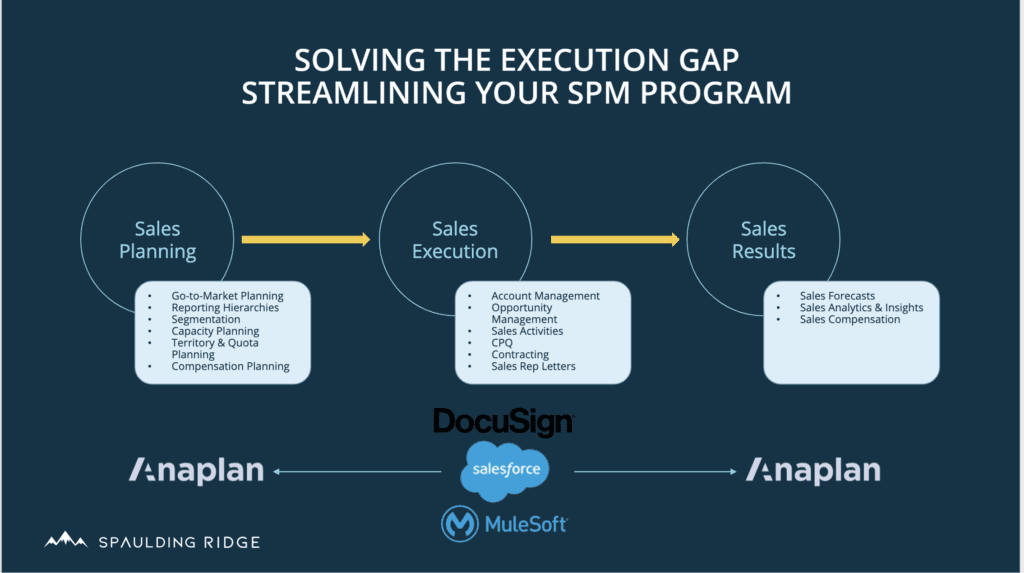- Business Transformation
- Sales & Revenue Optimization
- Finance & Operations
- Information Technology
- Private Equity
- Healthcare & Life Sciences
- High Tech
- Manufacturing
- Explore All Industries →
- Advisory + Diagnostics
- Change Management
- Implementation Services
- Cloud Application Managed Services
- Integrations
- Data Analytics
- Accelerators
- Cloud Applications
- Success Stories
- Insights + Events
- About Us
There’s such a vast amount of data and information in today’s world that it’s easy to get overwhelmed and find yourself in a state of analysis paralysis. In fact, the amount of data created, captured, copied, and consumed grew 5,000% between 2010 and 2021, and it seems likely that this trend will only continue.
The amount of information at one’s disposal today presents opportunities that did not exist just a short time ago. In order to capture that opportunity, it’s important to equip yourself with the right tools for analyzing and understanding information to make the right decisions. With so many options in the market today it can be equally challenging to know which one is right for your business. Making the wrong decision could set you back years, putting you at a disadvantage to competition.
Let’s focus in on the sales organization. Why? Sales is the revenue driver for companies, so it makes sense to start here and ask yourself if you’re getting everything that you can from your sales team. Those that work in sales already know that it’s a highly complex, data-driven discipline that can quickly overwhelm those who are not prepared for it. A good data strategy, real-time analytics, and careful planning can propel your sales organization to perform at its full potential. Let’s dig into how it works.
Optimizing Sales Performance with Sales Performance Management (SPM)
Optimizing sales performance is a broad phrase which encompasses many things. It’s not simply about automating processes or cutting out wasted time, although these are both good places to start. It’s worth noting that SPM is also about delivering the right product to the right customers at the right time.
Sales leaders look to sales operations for guidance on what types of customers to target, and high-performing sales teams are supported by operations teams which can deliver on this need to drive performance. Optimizing your sales team’s performance is not something that will happen by accident; it takes careful, deliberate planning with solid execution in order to build a lasting capability.
So, how can your sales operations team optimize sales performance?
Chief among the answers is building up a world-class SPM program. Let’s start by understanding what SPM is and how it plays into the bigger picture.
Gartner defines SPM as a suite of operational and analytical functions that automate and unite back-office operational sales processes. There are a lot of responsibilities which fall under that definition that sales operations teams manage on a regular basis, including: quotas, incentives, reporting & analytics, CRM management, and lead management just to name a few.
Additionally, many sales operations teams support strategic functions like go-to-market strategy, sales planning, or new product development. While the list of sales operations responsibilities is long, this provides ample opportunity to add value to an organization in numerous ways. Here is what the research suggests an SPM program can deliver:
- Optimizing territory design can increase sales by 2 to 7%, without any change in total resources or sales strategy
- Companies that automate lead management see a 10% or greater increase in revenue in 6-9 months
- How Hill-Rom increased revenue-per-employee 11% over a 2-year period by redesigning customer segments and right-sizing the sales force
- Companies with accurate forecasts are 10% more likely to grow revenue year-over-year and 2X as likely to be at the top of their field
Delivering on even a few of these examples can add serious value to your company’s bottom-line. With so much opportunity at stake, why is it that many sales operations teams struggle with building these capabilities?
It is true that building these capabilities can be complex, especially since they involve consolidating critical data and marrying multiple systems. However, not all solutions are equal, and the best solution is typically the simplest.
Anaplan for Sales Performance Management
As complexity and volume of data continues to grow, it’s becoming more prudent to consider applications within the technology stack that can handle it, and there’s real value to be had for a technology that can handle all of it.
Anaplan has surfaced in recent years as a market leader in the SPM space, having been placed in Gartner’s SPM Magic Quadrant from 2017-2020 and Market Guide for SPM in 20213.
Anaplan provides sales operations leaders the ability to unify Go-To-Market (GTM) planning and optimize channel performance. It provides visibility into performance drivers allowing GTM leaders to create robust, actionable plans quickly and accurately, as well as model potential changes in real-time.
The platform supports many SPM use cases, such as territory & quota planning, incentives, and sales analytics, all in a connected planning environment. Connected planning allows people, data, and plans to interact directly, and in real-time, to help better manage processes and the dependencies between them.
If your sales quotas change mid-year, this information is automatically provided to your incentives team who can process the change instantaneously. This provides sales operations teams an SPM solution that is greater than the sum of its parts, which increases as additional use cases are added to your Anaplan solution.
Furthermore, synergies with Salesforce and DocuSign make it easier to streamline the entire SPM process through a limited set of applications. Additionally, integration platforms like MuleSoft have native connectors to Anaplan, Salesforce, and DocuSign, making it easy to move data between systems.
Take a look at this example of how you can align sales applications to support your SPM process:

Managing your SPM program through only a handful of applications saves on training and enablement costs for administrators and end-users who need to learn fewer applications. This allows administrators to focus their time and energy on developing a deeper expertise in Anaplan, with the goal of growing the application’s capabilities over time.
End-users also benefit, enjoying a more seamless experience from a highly consolidated business process featuring fewer systems.
Anaplan also helps companies get smarter about their customer targeting strategy through its Predictive Insights (PI) engine.
Using artificial intelligence and machine learning, PI creates an ideal customer profile through analysis of customer data from your CRM system. This ideal customer profile is then compared against Anaplan’s internal database of accounts to identify like-accounts that are not in your CRM system. In this manner Anaplan acts as a lead generation source, scoring and ranking prospects based on their likelihood to buy.
How to Get Started Improving SPM Using Anaplan
At this point you may be wondering exactly how, and where, to get started on building out your SPM program in Anaplan. Whether you’re building a program from scratch or looking to overhaul your existing program, the task can seem daunting without first understanding a path forward.
For starters (and to bolster morale): there is no “wrong” place to start when beginning your Anaplan journey. All SPM use cases are connected to each other and starting with any one of them will offer natural paths for expanding into additional use cases. However, it’s beneficial to develop a long-term roadmap to ensure that you’re getting the highest value possible out of your investment at each step along the way.
If you’re looking for what I would consider a solid jumping off point for Anaplan, a great (and common) place to start is with territory and quota planning. Territory and quota planning are so interlocked that it can be difficult to do one without the other.
The accounts in a sales rep’s territory typically have a direct impact on quota, making it helpful to understand these two factors. Since they touch every member of the sales organization, and sales operations teams spend a significant amount of time creating them, territory and quota planning is very impactful. Not to mention, how often do you get to the end of your fiscal year and are asked to incorporate a new sales target or the latest account acquisitions before finalizing next year’s plan? These last-minute adjustments can cause a lot of headaches when handled manually. You can save sales operations teams time and stress as you finalize your planning process each year by leveraging territory and quota planning in Anaplan.

If you want to get a good bang for your buck, this is, undoubtedly, a good place to start.
From here, there are a couple of paths to take to expand your Anaplan system depending on what’s right for your business. Account segmentation and capacity planning may make the most sense for companies that are expanding into new markets and need to target additional customers or hire sales reps to support anticipated growth.
Incentive compensation may make sense for companies seeking operational gains or who spend a lot of time dealing with compensation disputes and adjustments. Especially so if these issues are leading to personnel issues resulting in attrition from your sales organization.
Ultimately, understanding your pain points and how Anaplan fits into the picture is key to developing a roadmap that will add value to your organization.
Exploring Anaplan for your Sales Performance Management Program
The proliferation of data in recent years has created challenges for companies struggling to derive data-driven insights. However, opportunities exist for companies that can do so successfully. Business leaders that leverage data to extract actionable insights for their sales performance management program can drive performance through their sales team, ultimately leading to higher revenue growth.
Applications like Anaplan can enable business leaders to build successful SPM programs by offering a myriad of capabilities through a single technology, from automating backend operational processes to identifying your next top customers through advanced AI and machine learning.
Sales teams also benefit from actionable insights to find new opportunities and drive additional revenue growth to the business. Additionally, sales operations teams can shift focus from data mining and Excel workbook consolidation to KPI tracking and data analysis to better understand what sales strategies are working.
Exploring how Anaplan can help evolve your business may be the key to unlocking future growth through the power of data and analytics.
To speak to an advisor to learn more about how Anaplan can help your business, contact us at [email protected].
Footnotes:







